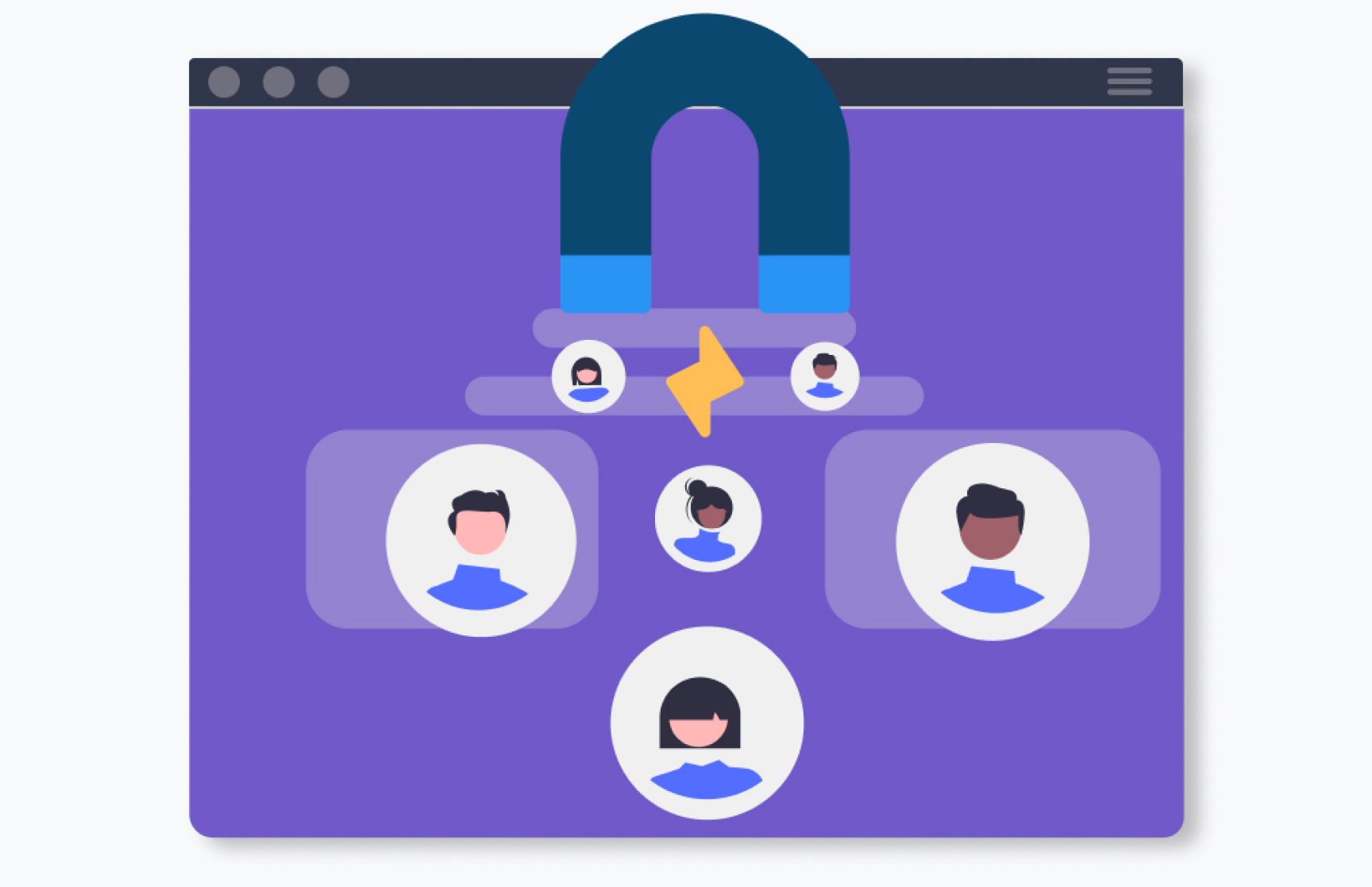

The Best Customer Retention Strategies to Grow Your Business
Customer retention may be defined as a company’s capacity to keep its current clients through forging close bonds with them. As more individuals intend to invest in startups today, business owners must prioritize increasing client retention as one of their top priorities.
The calculation for perfect company development takes into account both acquiring new clients and keeping hold of current ones. Effective marketing methods may help you attract new clients, but losing current ones because of a probable lack of interaction with them can seriously undermine the foundation of your company. This emphasizes how crucial client retention is to company management and growth.
What is Customer Retention?
Customer retention is simply the capacity of a business to keep its current clients by developing close bonds with them. Although it may seem simple, keeping customers is a difficult process. This is due to the fact that keeping current clients needs more active involvement and consumer interaction than gaining new ones.
Client retention is often a cheaper and more efficient process than customer acquisition, which may be much more time-consuming and costly. The major cause of this is that making progress from the beginning needs work while sustaining progress over time necessitates consistency.
What is the ‘optimal’ customer retention rate? This, therefore, is an issue that this presents. How many consumers should be typical? It’s critical to realize that while retention rates differ between sectors, there is no perfect rate. But studies have shown that these percentages may range from 55% to 84%. This means that you should adjust your goals for client retention.
Increasing the client lifetime value (LTV) is the goal of customer retention initiatives and tactics. This figure establishes the whole income derived from a client’s association with the business over the course of their lifetime. Over the years, several tactics have been created and improved, mostly because the significance of client retention has increased in the digital age. These tactics focus on the straightforward objective of keeping clients interested in your business, which will increase its total income and market worth.
The Importance of Customer Retention
Companies have realized that growing a loyal client base is inevitable because of the growth of e-commerce and social media marketing. The COVID-19 lockdown in particular has shown a shift in customer behavior.
The use of social media and online websites to purchase goods and services that are even available from the most basic physical stores has increased, making this development the most obvious. Consumers no longer make impulsive purchases or choose things at random. This is so because people don’t just purchase things. They also provide their lives with a valuable addition. They just need to click to switch to a new business that meets their requirements.
A company’s ability to be more perceptive and responsive to the requirements of its consumers might increase its ability to withstand competition in the market. Thus, significant client retention advantages might assist you in identifying the market trend of product development and improvement to raise your business’s retention rate.
As more individuals intend to invest in startups today, business owners must prioritize increasing client retention as one of their top priorities. Additionally, it increases return on investment (ROI) without causing a loss for the business.
A high retention rate reflects improved customer satisfaction and loyalty as well as better revenue creation. According to a survey, clients that are engaged are likely to generate 1.7 times more revenue than unengaged ones. An engaged workforce and customer base may generate up to 3.4 times the typical income. Rather than one-time consumers, loyal customers may boost total income. They also operate as a safeguard against bad weather and rising market rivalry.
By offering them sincere services and worthwhile goods, you may improve your relationships with your clients. It’s possible that all the other brands provide comparable goods as well. However, consumer feedback and follow-up might help you differentiate your services from those offered by the competition.
Unlock Unlimited Surveys & Responses with Fynzo Survey – 99% Features Free Forever!
⭐ Rated #1 Trending Survey Tool by Software Suggest ⭐
Why Choose Fynzo Survey?
- Unlimited Surveys: Create as many surveys as you need without any limits.
- Unlimited Responses: Collect unlimited responses effortlessly.
- 99% Free Features: Access nearly all our powerful features for free, forever.
- User-Friendly: Easy setup, create your survey in minutes.

Customer Retention Strategies
The goal of customer retention tactics is to keep your current clientele, which is the result of giving services to your clients. Customers’ involvement with the company may rise as a result of these techniques’ strengthening of client connections.
It’s crucial to remember that none of these tactics should be seen as sufficient on their own. If applied consistently and correctly, they serve many functions and objectives to raise the customer retention rate as a whole.
The following is a list of several client retention tactics:
1. Determining the causes of customer turnover
Understanding the reasons why consumers are no longer using the goods and services provided by your business will help you identify the precise areas that need improvement. For instance, a lot of individuals have started buying online these days. You may use this information to determine the adjustments that are required to make your services and goods more appealing to clients both online and offline.
2. Requesting consumer input
According to research, customer satisfaction may independently explain up to 71.7% of the variation in customer retention. You may assess the possible fit between customer expectations and your business’s offerings through the use of customer feedback. By regularly collecting and analyzing customer-generated feedback to enhance your services and goods, you may quickly spot any discrepancies between these.
Additionally, recognizing the emotional values that clients connect with your offerings may help you better grasp their viewpoints and expectations, and using this knowledge to your organization’s advantage can boost clients.
3. Clarifying objectives
Customers often have broad expectations for the marketplace. However, it is difficult for businesses to meet these demands; as a result, outlining your objectives ahead of time can help your clients better understand your services. Additionally, this will increase customers’ faith in your products and encourage them to support your company in the long run. Customers may choose to purchase from you based on the number and quality of services that an organization intends to provide.
4. Presenting savings and other advantages
People often make comparisons between the wide variety of services and goods that businesses provide. As social networking has gotten more widespread, it is now very simple for consumers to compare companies without leaving their homes. Even when a business gives a sizable discount, consumers may still want to compare the deals with those from other companies. As a result, you need to be aware of the trends your rivals are adopting in order to update your own.
5. Rewarding devoted clients
Since there’s a good probability that your consumers will place some value on the incentives you provide, they are not merely a product for them. This connection between awards and your business would enhance the reputation of your brand. Rewards may take many different forms. For instance, you can provide a client who has been loyal to your business for a certain number of years with a discount on their subsequent purchase. This may encourage them to make further purchases from your business and to tell their friends about it.
6. Consumer-focused marketing
An emphasis on communication, trust, and mutual prosperity has made customer-focused marketing strategies more significant throughout time. Customer-focused marketing is well-exemplified by the creation of weekly newsletters. Such modest company actions might encourage customers to trust your brand over competing ones that don’t have good communication. This is due to the fact that these efforts would enable you to emphasize customer service rather than merely providing them with goods and services in a one-way fashion.
7. Educating the staff on customer retention
Programs for training and development that are expressly created to increase client retention may become more and more beneficial to your business. They may aid the team members in comprehending the crucial components of the procedure. The team members’ skill-building programs may also prepare them for a range of customer attitudes and needs. Employees may get soft-skills training, for instance, to improve their ability to interact with consumers.
Conclusion
It is incorrect to think of customer acquisition and retention as two separate steps in the larger process of company expansion. This is due to the fact that although the latter is required for business development, the former may help the company flourish. By putting the needs of the consumers first and concentrating on building brand loyalty and emotional bonds, keeping the current clientele helps the company become more known. With customer loyalty programs, feedback, analyzing customer turnover trends, and customer-focused marketing, keeping these consumers is simple.
Unlock Unlimited Surveys & Responses with Fynzo Survey – 99% Features Free Forever!
⭐ Rated #1 Trending Survey Tool by Software Suggest ⭐
Why Choose Fynzo Survey?
- Unlimited Surveys: Create as many surveys as you need without any limits.
- Unlimited Responses: Collect unlimited responses effortlessly.
- 99% Free Features: Access nearly all our powerful features for free, forever.
- User-Friendly: Easy setup, create your survey in minutes.








